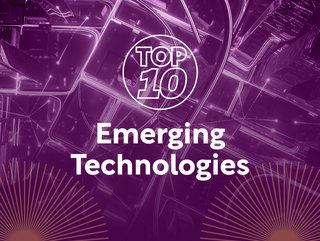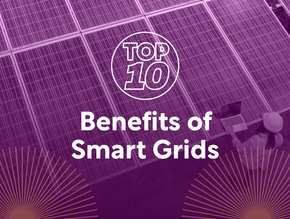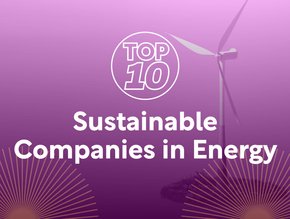
There’s no doubt technology has played — and continues to play — a significant role in the pursuit of more sustainable energy, decarbonisation and the removal of harmful emissions.
It has been key to reshaping the energy landscape when it comes to production and consumption, whether it be the advancement in solar technology or the potential of small modular nuclear reactors promising clean and efficient energy, innovation in technology is instigating major change across the breadth of the sector.
Here, we run through just 10 of the leading ways emerging technologies have impacted the energy industry, and the benefits they bring.
10. AI and predictive analysis
We couldn’t talk about technological advancements without discussing AI. With a history that stretches back as far as the 1950, the intelligence form burst onto the scene and became a mainstream technology in the last year or so. AI’s role in energy has expanded exponentially thanks to predictive analytics algorithms, which can forecast renewable energy output with unprecedented accuracy, which, in turn, enhances grid stability. On the whole, AI-driven predictive analytics is integral to optimising energy production, distribution and consumption which, in turn, streamlines operations and identifies efficiency opportunities across the energy value chain.
9. Tidal and wave energy
By definition the electricity generated from the movement of waves and tidal flows, wave power is much more predictable than wind power and increases during colder months when electricity demand is typically at its highest. Thanks to advancements in tidal and wave energy technologies, the power of ocean currents and waves can be harnessed to generate electricity. This has come in the form of the development of tidal turbines, wave energy converters and floating platforms, which enable reliable and predictable renewable energy generation.
8. Energy-efficient buildings
Incorporating emerging technologies like smart sensors, IoT devices and advanced insulation to minimise energy consumption, energy-efficient buildings ensure reliance on traditional energy sources like fossil fuels is reduced. It also enables the lowering of carbon emissions and contributes to overall sustainability efforts. The International Energy Agency (IEA) says buildings are important for clean energy transitions due to the long lifetime of structures, their heating and cooling systems as well as other internal appliances. On top of this, design and purchasing decisions made as part of their construction shape energy use for the future.
7. EV infrastructure
Thanks to the growing uptake of EVs, the development of robust charging infrastructure has boomed with it, with fast-charging stations, wireless charging technology and vehicle-to-grid (V2G) integration popping up to support widespread adoption and grid stability. With this, time-of-use (TOU) tariffs are becoming more prevalent as EV owners look to improve their electricity affordability by charging their vehicles during off-peak hours. This system promotes more efficient use of the energy grid.
“The move to electric mobility not only reduces greenhouse gas emissions but will have a beneficial effect on urban air quality, a pressing problem in many parts of the world,” said University of Birmingham Professor and lawyer Robert Lee.
6. Smart grid and energy management systems
Smart grids bring the power of networked, interactive technologies into an electricity system, giving utilities and consumers alike a new level of control over energy use. As a result, power grid operations are improved and costs are greatly reduced. The technologies involved in sustaining smart grids — like advanced sensors, real-time data analytics and demand response systems — optimise energy distribution, enhance grid reliability and enable greater integration of renewable energy sources.
5. Advanced solar technologies
There have been some major developments in the solar PV space of late, including a significant breakthrough in solar panel efficiency using perovskite material. By adding a layer of perovskite – a crystal-structured material that acts as another semiconductor – on top of the silicon layer, solar cells broke through the efficiency ceiling and passed the milestone of 30%. These revelations have prompted scientists to predict that solar panel advances will enable millions of people to go off grid.
“Our results show that even in 2050 going off-grid won’t be the most economic choice, but it could make sense to invest in these kinds of self-sufficient buildings if you are willing to pay more for self-sufficiency,” Max Kleinebrahm, Lead Researcher at Karlsruhe Institute of Technology — which research found that more than 50% of Europe’s 41 million freestanding homes could have been self-sufficient in 2020 using just solar and batteries.
“It would be less efficient to have a large number of households abandoning the grid rather than supporting it.”
The research also established this figure could rise to 75% by 2050.
4. Hydrogen energy
Hydrogen is gaining attention and popularity as a clean energy carrier for fuel cells, industrial processes and energy storage. It can be produced through several methods, including natural gas reforming and electrolysis. Advancements in hydrogen production methods — like electrolysis powered by renewable energy — are making hydrogen more sustainable. With the momentum behind hydrogen strong, the IEA says faster action is required to create demand for low-emission hydrogen and unlock investment that can accelerate production.
3. Carbon capture, utilisation and storage (CCUS)
Involving the capture of CO2, from large point sources like power generation or industrial facilities that use either fossil fuels or biomass as fuel, CCUS compresses and transports CO2 by pipeline, ship, rail or truck to be used or injected into deep geological formations such as depleted oil and gas reservoirs. According to the IEA, the most advanced and widely adopted capture technologies in this space are chemical absorption and physical separation, with others including membranes and looping cycles. Technologies in CCUS allow for decarbonisation and steps toward net-zero emissions goals.
2. Advanced nuclear reactors
The benefits of newer advanced reactors now being built include that they have simpler designs which, in turn, reduce capital cost and ensure better fuel efficiency and enhanced safety more fuel efficient and are inherently safer. Next-generation nuclear reactors, including small modular reactors (SMRs) and advanced fission designs, enable more proliferation-resistant nuclear power generation. As well as this, they have the potential to produce abundant, carbon-free energy — and reliably — contributing to a cleaner and more sustainable energy future while mitigating the contributions and impacts of climate change.
1. Renewable energy storage
Advancements in energy storage technologies — such as grid-scale batteries, flow batteries, and hydrogen storage — are one of the most crucial and effective ways of integrating renewable energy sources efficiently and reliably to the grid. Renewable energy storage has the ability to overcome intermittency challenges as well, as it is able to efficiently store surplus energy generated during peak production periods — like sunny or windy days — and release during times of high demand or low renewable energy generation. As a result, these technologies ensure a more reliable and stable energy supply. As a result, grid stability is enhanced, reliance on fossil fuels is reduced and greater integration of renewable energy sources into the energy mix are facilitated.
*******************
Make sure you check out the latest edition of Energy Digital Magazine and also sign up to our global conference series - Sustainability LIVE 2024.
*******************
Energy Digital is a BizClik brand.






